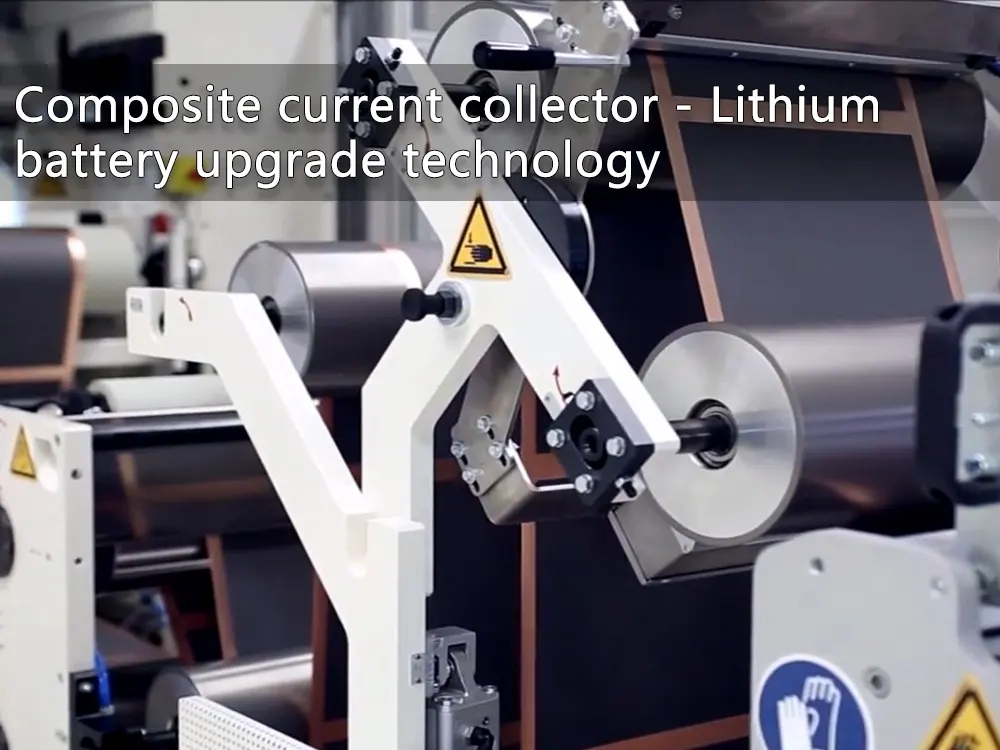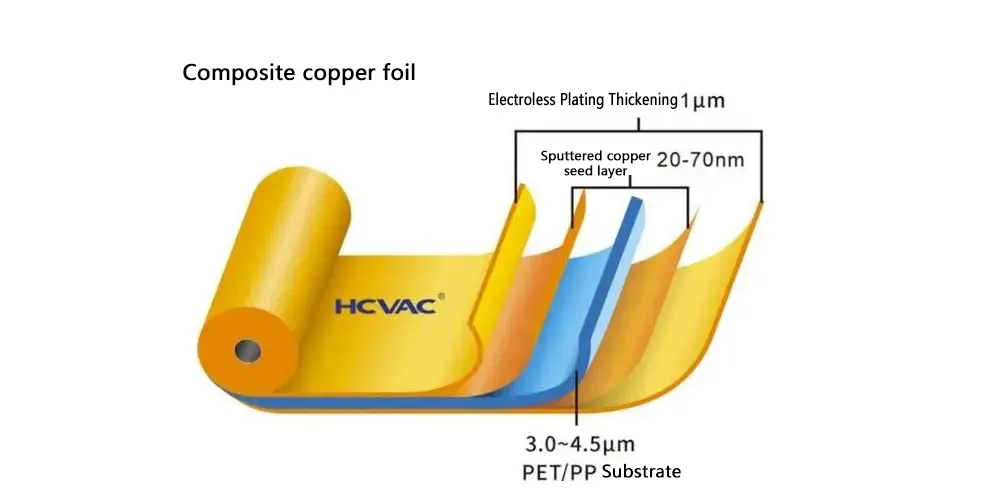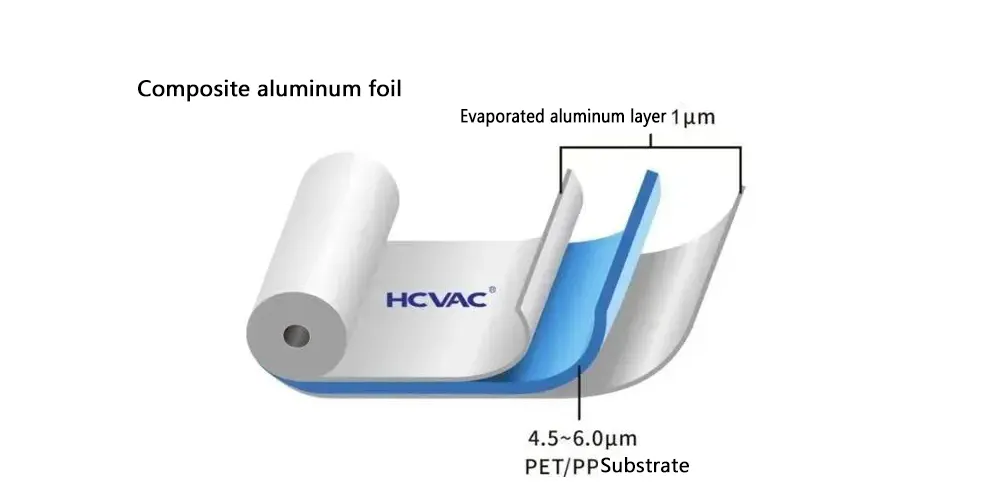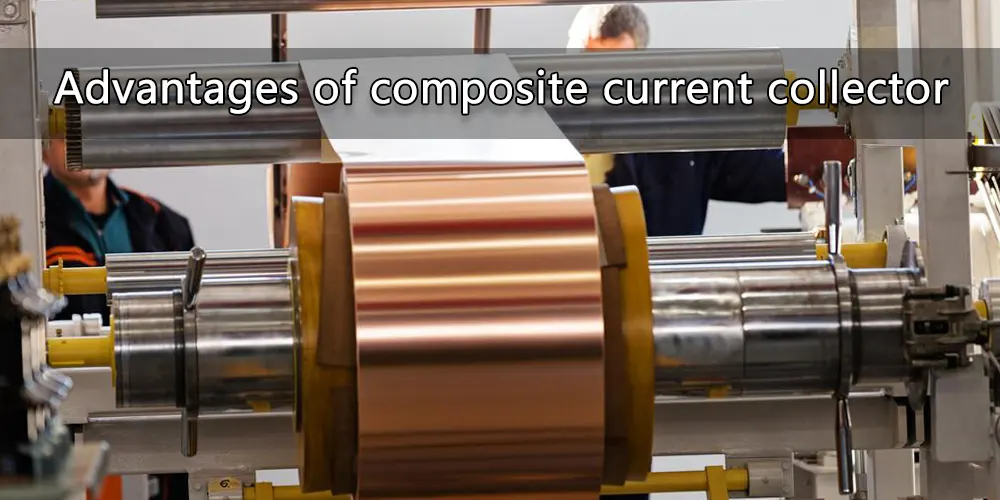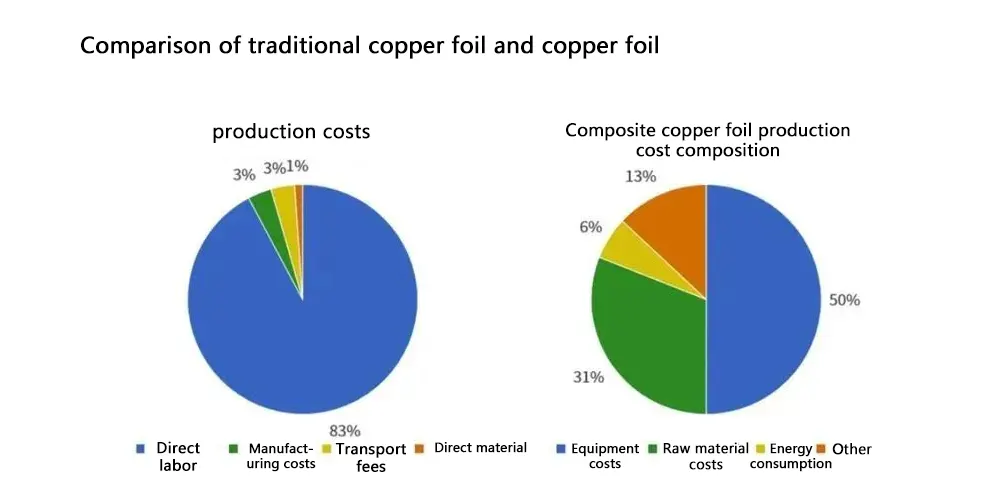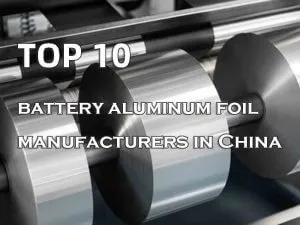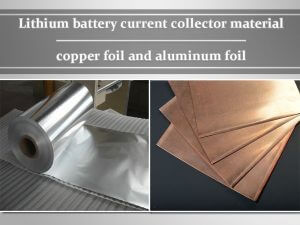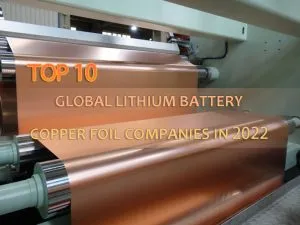Composite current collector - lithium battery upgrade technology
Composite current collector technology is a material innovation that acts as a fuse in the event of an internal short circuit. Composite current collectors are greatly optimized in terms of safety, performance and cost, and are expected to partially replace traditional current collectors.
Due to the advantages of safety, energy density and low cost (after mass production) of the composite current collector. At present, it has also attracted a number of 3C consumer lithium battery manufacturers and energy storage battery manufacturers to actively try, and it is possible to start initial mass production applications next year.

What is a current collector
The current collector is the key material of the cathode and anode electrodes in the lithium battery cell. As a structure or part that collects current, its function is to gather the electrons generated by the electrochemical reaction and lead them to the external circuit, thereby realizing the process of converting chemical energy into electrical energy. The current lithium battery cathode and anode respectively use metal aluminum foil and copper foil as current collectors, which are used to collect current structures or parts.
Why focus on composite current collectors
Reduce costs and increase efficiency, composite current collectors are emerging in consumption, power, and energy storage batteries. After 2021, composite current collectors will take into account the advantages of energy density, cycle life, safety and battery cost, and will emerge in the fields of consumption, power and energy storage.
Consumption: In July 21, OPPO released a five-layer sandwich type safety battery, introduced composite current collector technology, and realized the application of composite current collectors in the field of consumer electronics.
Power: The multifunctional composite current collector technology developed by one of the top 10 lithium ion battery manufacturers in China CATL was rated as one of the top ten innovative technologies in the 2021 Global New Energy Vehicle Frontier and Innovative Technology Selection.
Energy storage: Hithium Energy applied for a composite current collector and its preparation method and application patent in January 22.
On November 11, 2022, Jinmei New Materials announced the mass production of 8-micron composite aluminum foil, becoming the first company in China to announce the mass production of composite current collectors.
What is a composite current collector
A new type of material with a sandwich structure of metal conductive layer-polymer material support layer-metal conductive layer. The current collector is a key material in lithium batteries, and its function is to gather the current generated by the active materials of the battery to generate a larger output current.
Aluminum foil is used for the cathode, and copper foil is used for the negative electrode. In order to improve the energy density and safety of batteries and reduce costs, current collectors for lithium batteries are developing in the direction of high density, light and thin, high tensile strength, and high elongation.
The composite current collector is a kind of “sandwich” layer made of polymer insulating resin PET/PP and other materials, and metal aluminum or metal copper is deposited on the upper and lower sides. A new type of lithium battery material with a sandwich structure of “metal conductive layer-PET/PP polymer material support layer-metal conductive layer”.
Composite copper foil: PVD magnetron sputtering is used on the surface of substrates such as PET/PP with a thickness of 3.0-4.5µm. A layer of 20-70nm copper film is plated on both sides, the square resistance is about 0.5-2Ω, and the surface of the film is metallized, and then the copper film is thickened to 1µm by electroless plating.
Composite aluminum foil: PVD evaporation is used on the surface of PET/PP substrates with a thickness of 4.5-6.0 µm, and a layer of 1 µm aluminum film is coated on both sides to realize metallization of the film surface and replace traditional aluminum foil.
Composite copper foil and composite aluminum foil are used as negative electrode current collector and cathode current collector to replace traditional electrolytic copper foil and calendered aluminum foil for lithium batteries.
Advantages of composite current collectors
Composite current collectors have the advantages of high safety, high specific energy, low cost, long life, and strong compatibility
High safety: traditional technology can only delay the internal short circuit, and at the expense of battery energy density. The polymer substrate in the middle of the composite current collector has flame retardant properties, its metal conductive layer is relatively thin, and it will blow like a fuse when it is short-circuited, and it will melt quickly before thermal runaway, and the damage of the battery is limited to the puncture site to form a “point break”.
High performance: The middle layer of the composite current collector is made of lightweight polymer material, which is 50%-80% lighter than the pure metal current collector. As the proportion of weight decreases and the proportion of active materials in the battery increases, the energy density can be increased by 5%-10%.
Low cost: Compared with traditional foil materials, the use of composite current collector metal materials is reduced, so the cost of raw materials can be reduced.
Long life: The polymer material forms a layered annular sponge structure around the active material layer in the battery. During the charge and discharge process, it can absorb the expansion-shrinkage stress caused by the intercalation and extraction of lithium ions in the active material layer of the pole piece, so as to maintain the long-term integrity of the pole piece interface and increase the cycle life by 5%.
Strong compatibility: The direct upgrade of traditional current collectors to composite current collectors will not affect the internal electrochemical reactions of the original battery. Therefore, the composite current collector can be applied to power batteries of various specifications and systems (but due to the introduction of PET materials, new processes are required for battery manufacturing).
High safety: The burr of the polymer material is small and the circuit breaker effect occurs, which can effectively control the thermal runaway of the battery
During the use of the battery, due to factors such as collision and extrusion, electrical component failure, improper temperature management and other factors, the battery separator will fail, the current will increase and heat will be generated, that is, an internal short circuit will occur. During the acupuncture test, the traditional copper/aluminum foil will produce large-sized burrs, which will cause internal short circuits and cause thermal runaway.
However, the size of the burr generated by the composite current collector is small, and the open circuit effect caused by the heating of the superimposed polymer material layer can greatly reduce the short-circuit current in a short period of time, and also effectively prevent the thermal runaway caused by lithium dendrites penetrating the separator.
With lighter weight, downstream lithium-ion battery manufacturers have the opportunity to inject more electrolyte or cathode and anode active materials into the battery cells to increase battery capacity and extend battery life.
High specific energy: Under the same conditions, the energy density is expected to increase by more than 5%.
Composite current collectors, especially composite copper foils, can achieve significant weight reduction. According to the data, traditional copper foil accounts for about 13% of the total weight of lithium batteries, which is a key material that affects the quality and energy density of batteries.
The copper thickness in the composite copper foil is reduced by 66.67% compared with the 6μm copper foil, and the aluminum thickness in the composite aluminum foil is reduced by 80% compared with the 10μm aluminum foil. The saved part of the metal consumption is replaced by PET and other materials, which ensures safety and is lighter in weight, and the product’s overall performance is better.
Low cost: In theory, it is estimated that composite copper foil will reduce the cost by 40%+ compared with traditional copper foil.
The single material cost of composite copper foil is 65% lower than that of traditional copper foil. Taking 6μm copper foil as an example, its unit material cost is 3.73 RMB/square meter;
The thickness of 6.5 micron PET copper foil is 2 μm, and the unit material cost is 1.3 RMB/square meter, which is lower than the unit cost of copper foil, and the material cost advantage is obvious. It is estimated that the theoretical cost of composite copper foil is 40%+ lower than that of traditional copper foil.
The cost of traditional copper foil material is 3.73 RMB/square, and the total production cost is 4.5 RMB/square based on 83% of the material cost. The composite copper foil material cost is 1.3 RMB/square, and the total production cost is 2.6 RMB/square based on the material cost accounting for 50%.
Conclusion
The cost reduction effect of composite copper foil is obvious. If the problem of mass production is solved in the future, it is expected to replace traditional copper foil on a large scale. It is estimated that the penetration rate of composite copper foil will reach 20% in 25 years, the global demand will reach 4.5 billion square meters, the unit price will be 4.6 RMB/square meter, and the market space will reach 20.6 billion RMB.
The cost reduction effect of composite aluminum foil is average, but the mass production progress is leading (Jinmei New Material has been mass-produced in November 22nd) + can improve safety + light and thin (the thickness of aluminum foil is reduced from 12 microns to 2 microns), It is expected to achieve a certain degree of substitution in the fields of consumption and high-end power.
It is estimated that the penetration rate of composite aluminum foil will reach 10% in 25 years, the global demand will reach 2.1 billion square meters, the unit price will be 4.1 RMB/square meter, and the market space will reach 8.6 billion RMB.

